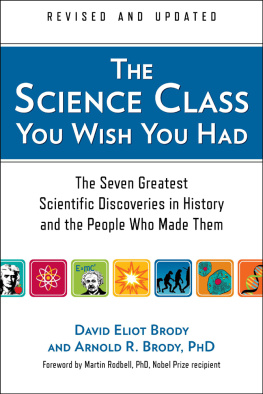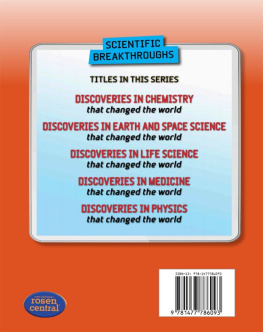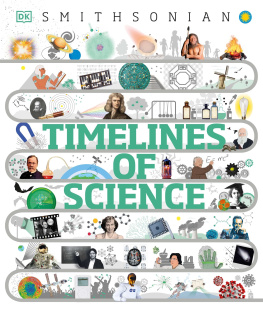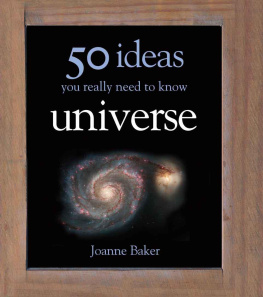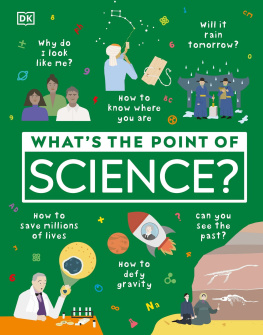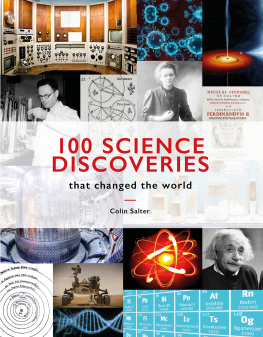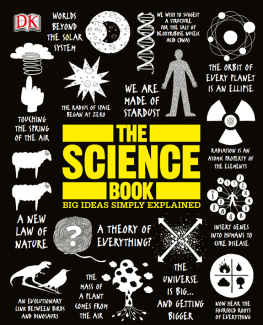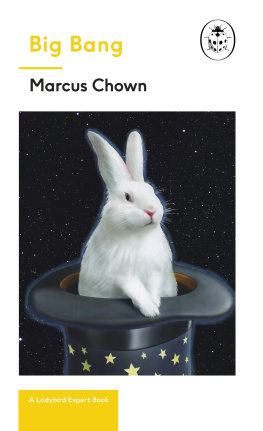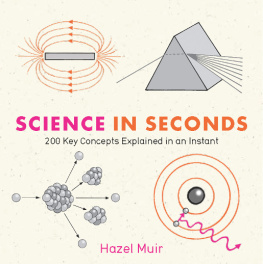THE
SCIENCE CLASS
YOU WISH YOU HAD

THE
SCIENCE CLASS
YOU WISH YOU HAD
The Seven Greatest
Scientific Discoveries in History
and the People Who Made Them
REVISED AND UPDATED
David Eliot Brody
and Arnold R. Brody, PhD
A PERIGEE BOOK
A PERIGEE BOOK
Published by the Penguin Group
Penguin Group (USA) Inc.
375 Hudson Street, New York, New York 10014, USA

USA | Canada | UK | Ireland | Australia | New Zealand | India | South Africa | China
Penguin Books Ltd., Registered Offices: 80 Strand, London WC2R 0RL, England
For more information about the Penguin Group, visit penguin.com.
Copyright 1997, 2013 by David Eliot Brody and Arnold R. Brody, PhD
All rights reserved. No part of this book may be reproduced, scanned, or distributed in any printed or electronic form without permission. Please do not participate in or encourage piracy of copyrighted materials in violation of the authors rights. Purchase only authorized editions.
PERIGEE is a registered trademark of Penguin Group (USA) Inc.
The P design is a trademark belonging to Penguin Group (USA) Inc.
eISBN: 978-1-101-62498-2
The Library of Congress has cataloged the first Perigee edition as follows:
Brody, David Eliot.
The science class you wish you had : the seven greatest scientific discoveries in history and the people who made them/ David Eliot Brody and Arnold R. Brody.
p. cm.
A Perigee Book.
Includes bibliographic references and index.
ISBN 978-0-399-52313-7
1. Discoveries in scienceHistory. I. Brody, Arnold R. II. Title.
Q180.55.D57B76 1997
500DC21 96-45097 CIP
PUBLISHING HISTORY
First Perigee trade paperback edition / August 1997
Revised Perigee trade paperback edition / August 2013
Text design by Tiffany Estreicher
While the authors have made every effort to provide accurate telephone numbers, Internet addresses, and other contact information at the time of publication, neither the publisher nor the authors assume any responsibility for errors, or for changes that occur after publication. Further, the publisher does not have any control over and does not assume any responsibility for author or third-party websites or their content.
Most Perigee books are available at special quantity discounts for bulk purchases for sales promotions, premiums, fund-raising, or educational use. Special books, or book excerpts, can also be created to fit specific needs. For details, write: Special.Markets@us.penguingroup.com.

ACKNOWLEDGMENTS FOR THE
ORIGINAL EDITION (1997)
AND THE SECOND EDITION (2013)
This project would not have been possible without the assistance of a talented and generous group of people. First, our cousin, Stephen Karon, understood astronomy, physics and electromagnetic fields and forces before he was ten years old. We thank him for his careful review of the entire manuscript and his valuable contributions. Kenneth and Bette Brody, both chemistry teachers and experts in the history of science, took time to read several chapters critically and provided numerous suggestions to improve them. They also directed us to useful sources.
In the early stages of our research, Joseph Broz, PhD, a physicist with broad expertise and with much insight into the relationship between science and society, shared with us his knowledge of physics, relativity, and the history of science, and directed us to a number of excellent sources. Robert C. Amme, PhD, professor of physics at the University of Denver for the past thirty years, spent many hours reviewing the drafts of Part Three (relativity) and explaining its subject. Davids colleagues Becke McGee and Brad McKim also read Part Three and gave us several constructive suggestions that were incorporated into the manuscript. In combination, these four people helped us present relativity in a manner that will, we hope, bring theseemingly untouchable subject of space and time down to earth for the reader.
We thank Peter Jordan for his comments on Part Five (evolution), for providing his expertise in geology and plate tectonics, and for pointing out the notable scientific discoveries and contributions made by his Scottish countrymen.
Davids wife, Susan, read the entire manuscript and provided many creative comments. We thank her for those comments as well as for her patience, support, and encouragement. Arnolds wife, Toby, reviewed and listened intently to the additions prepared for the second edition and offered ideas and encouragement throughout the process. We thank the Penrose Library at the University of Denver and its staff members for use of the rich depository of science research materials. In addition, the University of Colorado (Norlin Library), the branches of the city of Denver library system, and the Denver Museum of Natural History were very cooperative in providing their extensive and comprehensive resources and information.
We owe much thanks to our agent, Elizabeth Kaplan of the Ellen Levine Literary Agency in New York, who made this entire book possible by her early and accurate advice on the approach and direction it should take and by finding the right publisher to bring it to fruition. Our editor at the Berkley Publishing Group for the original 1997 edition, Suzanne Bober, was highly supportive of this project from the beginning of our association with her, and expertly guided it through all the stages in the publishing process. We greatly appreciate her comprehensive and thoughtful editing of the manuscript.
We also thank our editor at Perigee Books/Penguin Group for the second edition, Jeanette Shaw, and our copyeditor, Candace Levy.
Bonnie Rothschild did an excellent job of typing and revising the many drafts of the manuscript that were necessary over the years during which it was in the making. We thank her for the quality of her work and her promptness and reliability in always meeting our deadlines, often resulting in her working all hours of the day and all days of the week. Finally, we thank Janice Gilmore for her many hours of work in 2011 and 2012 typing and editing the revised manuscript for the second edition.
David E. Brody and Arnold R. Brody
In MemoriamMartin Rodbell, PhD
The fundamental thing is the opportunity to be creative, said Martin Rodbell, PhD, recipient of the Nobel Prize in physiology or medicine in 1994. Sadly, Dr. Rodbell passed away on December 7, 1998, at the age of seventy-three. He had discovered a central component of the communication system that allows cells to read external and internal signals from the millions of molecules in which our cells are immersed. The so-called G-proteins that Rodbell discovered transmit signals from hormones and proteins that control normal and abnormal functions, such as those for cell growth and neurotransmission. Aberrations of G-proteins are the basis of a variety of disease states, including cancer, heart defects, and cholera. Indeed, in 2012, the Nobel Prize in chemistry was awarded to Drs. Robert Lefkowitz of Duke University and Brian Kobilka of Stanford University. These brilliant investigators followed up on Rodbells prize-winning work and determined at the molecular and atomic levels how the G-proteins bind inside cells, thus triggering the cascades of signals that control cell functions in health and disease.

